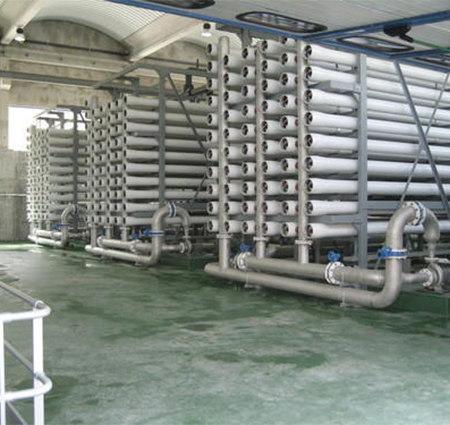 Desalination is a separation process used to reduce the dissolved salt content of saline water to a usable level. SVJPL Seawater Desalination Plant uses a process called reverse osmosis (RO) to produce drinking water from seawater.
Desalination is a separation process used to reduce the dissolved salt content of saline water to a usable level. SVJPL Seawater Desalination Plant uses a process called reverse osmosis (RO) to produce drinking water from seawater.
Seawater coming into the plant goes through a rigorous pretreatment process then freshwater is separated from the seawater using reverse osmosis. The end product is high-quality drinking water.
High pressure forces the pretreated water through semi-permeable membranes to separate the freshwater, leaving twice-as-salty seawater and other minerals behind.
RO plants have a very high space/production capacity ratio, ranging from 25 000 to 60 000 l/day/m2.
ADVANTAGES
- Low maintenance, nonmetallic materials are used in construction.
- Energy use to process brackish water ranges from 1 to 3 kWh per 1 0001 of product water.
- RO technologies can make use of use an almost unlimited and reliable water source, the sea.
- RO technologies can be used to remove organic and inorganic contaminants.
- Aside from the need to dispose of the brine, RO has a negligible environmental impact.
- The technology makes minimal use of chemicals.
